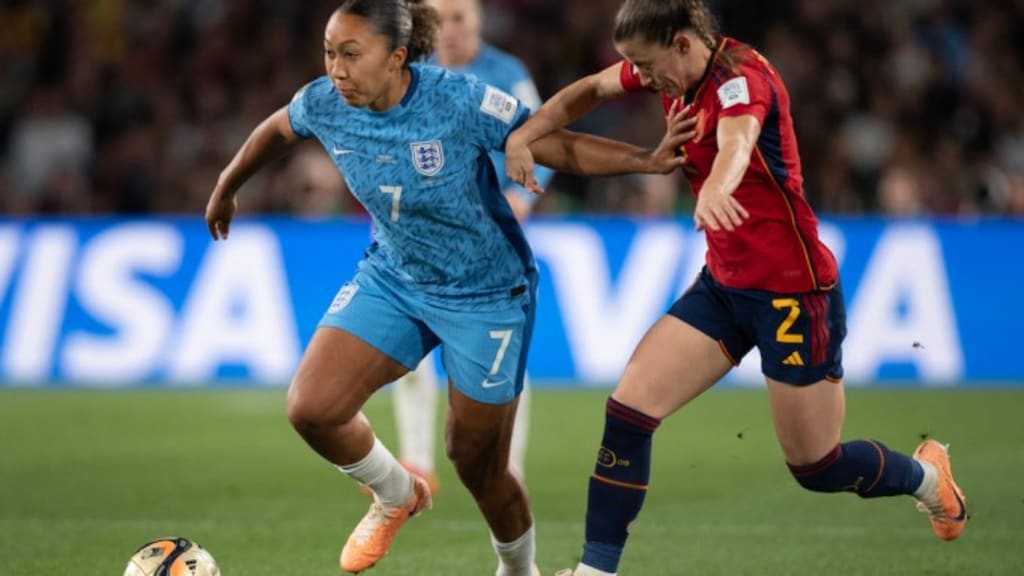The Women's World Cup
: The Evolution of the Women's World Cup"

Since its inception, the Women's World Cup has been a beacon of empowerment, breaking through societal barriers and evolving into a global phenomenon that transcends the boundaries of sports. This tournament, aptly titled "A Legacy of Champions: The Evolution of the Women's World Cup," stands as a testament to the remarkable journey of women's football and its impact on gender equality, representation, and empowerment.
The birth of the Women's World Cup was a visionary endeavor that defied conventional norms. In the early 1990s, when women's football was often marginalized, a handful of pioneers dared to dream of a global tournament that would showcase the prowess of female athletes. The inaugural tournament in 1991 marked a significant turning point, setting the stage for a journey that would reshape the landscape of women's sports.
Over subsequent editions, the Women's World Cup underwent a transformative evolution. From a modest event with limited recognition, it grew into a global spectacle that captivates millions. Changes in format, increased participation, and growing support from FIFA and stakeholders propelled the tournament's growth. The Women's World Cup steadily shifted from obscurity to the center stage of international sports, garnering attention and respect with each passing year.
Central to the tournament's evolution are the iconic players who have graced its fields. Athletes like Mia Hamm, Birgit Prinz, and Marta emerged as trailblazers, elevating the Women's World Cup to unprecedented heights. Their exceptional skills, leadership, and dedication not only contributed to on-field successes but also inspired countless young athletes to dream big. These players, through their achievements, became synonymous with the legacy of champions that the Women's World Cup embodies.
However, the impact of the Women's World Cup transcends mere athletic achievements. It has become a powerful catalyst for conversations about gender equality and empowerment. As the tournament gained prominence, it challenged societal norms and stereotypes, proving that women's football is not just a sport but a platform for breaking barriers. The Women's World Cup has provided a stage for women to showcase their strength, determination, and resilience, shifting perceptions and fostering inclusivity both on and off the pitch.
In an age where media shapes narratives and perceptions, the Women's World Cup has driven a media revolution. From initial dismissal to meaningful coverage, the shift in media representation has been profound. The stories of these athletes are no longer confined to the sports section; they are celebrated across platforms, influencing societal attitudes and inspiring future generations. The media's role in amplifying these narratives has played a pivotal role in changing the dialogue surrounding women's sports.
Beyond sports, the Women's World Cup has become a cultural phenomenon that transcends geographical boundaries. It unites people from diverse cultures and backgrounds, fostering a sense of unity through the shared passion for football. The tournament's impact extends to art, fashion, entertainment, and societal discourse, as it demonstrates the unifying power of sports in a world often divided by differences.
The legacy of the Women's World Cup extends beyond the tournament's conclusion. It sparks a transformation at the grassroots level, igniting interest and participation in women's football. The tournament's success has encouraged investment in the sport, creating more opportunities for aspiring athletes. Moreover, it has initiated policy changes and discussions on equal pay, reinforcing the tournament's role as a catalyst for change on a larger scale.
Looking ahead, the Women's World Cup faces both challenges and opportunities. Sustaining the momentum, addressing disparities in resources, and maintaining relevance are essential considerations. However, the resilience and spirit demonstrated by the athletes on the field mirror the determination required to overcome these challenges. The Women's World Cup's evolution serves as a reminder that champions aren't just defined by their victories but by their ability to adapt and thrive in the face of adversity.
Fans play a pivotal role in shaping the success, visibility, and impact of the Women's World Cup. Their support extends beyond the stadium, making a significant contribution to the growth of women's football and the overall empowerment of female athletes. The responsibility of fans towards the Women's World Cup is multifaceted, encompassing advocacy, representation, respect, and the fostering of a positive and inclusive environment.
1. Advocacy and Promotion:
Fans have a responsibility to advocate for and promote the Women's World Cup with the same enthusiasm and fervor as they do for the men's tournament. Sharing news, engaging in conversations, and creating buzz around the event on social media platforms can amplify its reach and impact, drawing more attention to women's football and helping to break down gender stereotypes.
2. Fostering Inclusivity:
Fans must create an inclusive atmosphere that welcomes people of all backgrounds and genders. Women's football is for everyone, and fans can contribute to an environment where everyone feels valued and respected, regardless of their gender or identity. Challenging stereotypes and biases within their own fan communities is a responsibility that can pave the way for a more inclusive sports culture.
3. Attending Matches and Boosting Attendance:
Attending Women's World Cup matches sends a powerful message to the world about the significance of women's sports. Fans can play a crucial role in filling stadiums, creating an electrifying atmosphere that showcases the passion and dedication of both players and spectators. Vibrant attendance not only benefits the tournament's atmosphere but also demonstrates a demand for women's football
4. Media Representation and Visibility
Analyze the changing landscape of media coverage and representation of the Women's World Cup. Explore how increased media attention has influenced perceptions of women's sports and contributed to its evolution.
In conclusion, "A Legacy of Champions: The Evolution of the Women's World Cup" encapsulates the transformative journey of women's football from its nascent stages to a global phenomenon. The tournament's evolution mirrors the broader societal shift towards gender equality and empowerment. Its legacy reverberates through the stories of iconic athletes, the impact on media representation, and the cultural unity it fosters. As the Women's World Cup continues to evolve, it carries forward a legacy of champions who have not only shaped a sport but have also shaped a world that embraces diversity, empowers women, and celebrates the remarkable achievements of all its players.
About the Creator
Enjoyed the story? Support the Creator.
Subscribe for free to receive all their stories in your feed. You could also pledge your support or give them a one-off tip, letting them know you appreciate their work.
Reader insights
Outstanding
Excellent work. Looking forward to reading more!
Top insights
Compelling and original writing
Creative use of language & vocab
Easy to read and follow
Well-structured & engaging content
Excellent storytelling
Original narrative & well developed characters
Expert insights and opinions
Arguments were carefully researched and presented
Eye opening
Niche topic & fresh perspectives
On-point and relevant
Writing reflected the title & theme






Comments (1)
Tgis is very insightful